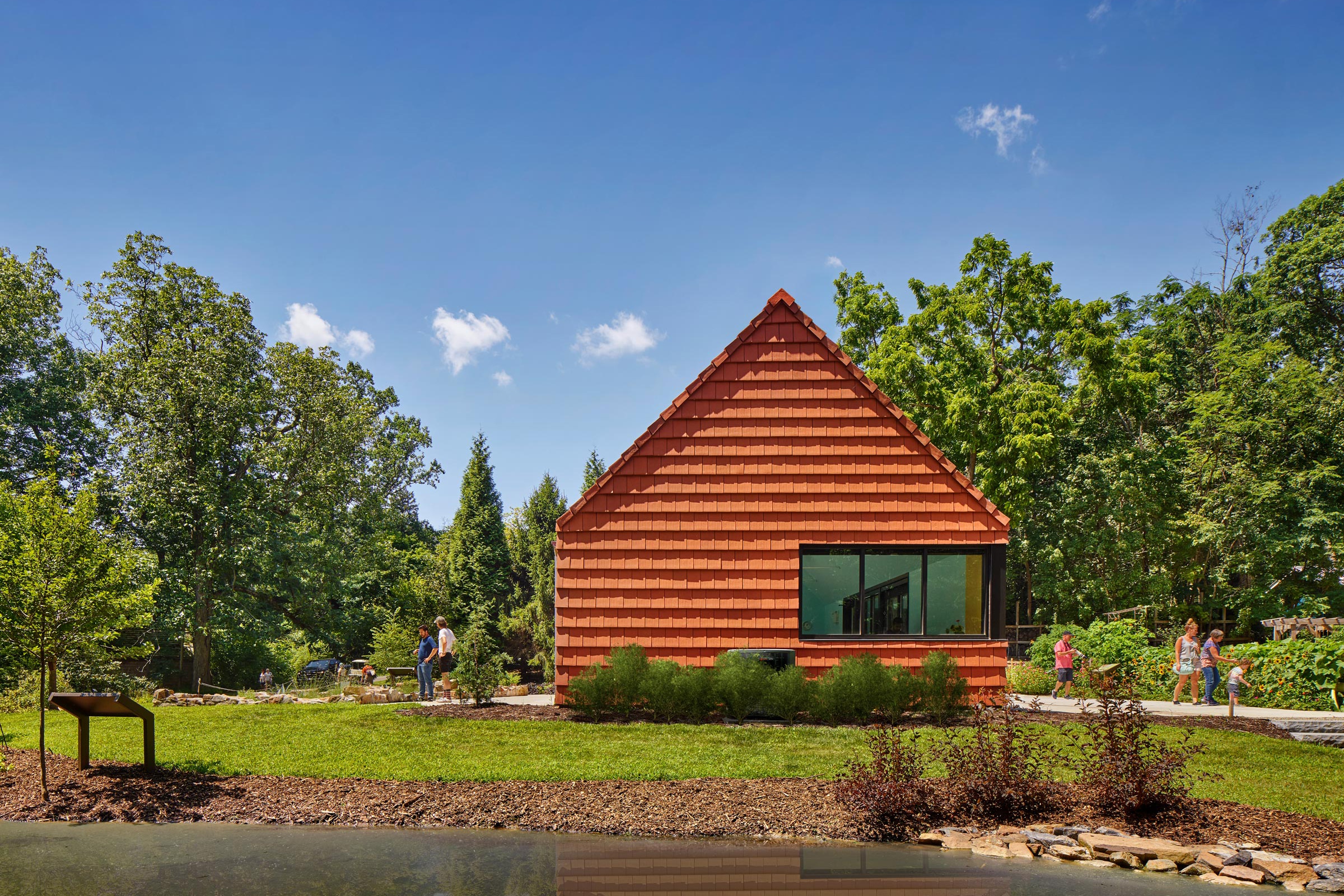Story at a glance:
- The US produces 11 million tons of waste asphalt roofing shingles annually, but terra-cotta can help reduce this waste.
- Terra-cotta is 100% natural and recyclable, as it comes from the earth.
- Terra-cotta roofing us durable enough to stand up to tough weather.
The North American roofing industry was valued at $12.8 billion in 2017 and is projected to grow to about $14.4 billion by 2023. But the demand for traditional asphalt shingles is projected to decline due to environmental concerns surrounding the product. Meanwhile, the demand for natural, sustainable materials like terra-cotta tile is expected to increase.
When it comes to sustainable building materials, terra-cotta tile is one of the best products the industry has to offer. Part of what makes terra-cotta so sustainable is that its production method is simple. Terra-cotta is formed by combining dirt, shale, water, and applying fire—hence the name terra-cotta, which translates from Italian as “baked earth.”
Terra-cotta has been used for thousands of years. Structures across Europe and Asia are a testament to the material’s resilience. Terra-cotta’s durability has allowed companies like Ludowici to be in the industry for over 130 years.
“The benefits of Ludowici’s terra-cotta reach far beyond durability. Made from the earth and creating zero waste, our terra-cotta tiles are 100% recyclable, energy-efficient, and free of toxic and synthetic ingredients. Our tiles do not require chemical cleaning, which protects the environment from harmful run-off,” Rob Wehr, vice president of business development and national accounts at Ludowici, told gb&d in a previous article.
From aesthetics to its ability to help architects earn LEED points, the benefits of terra-cotta roofing are many. Here are just a few.
1. It’s durable.

California State University Monterey Bay uses terra-cotta wall cladding and rainscreen and sunscreen systems from Terreal North America, a subsidiary of Ludowici. Photo by Robert Benson Photography
The breaking strength of terra-cotta roofing tile is a critical measure of how long you can expect your roof to last—and tile that breaks easily can be dangerous. There are six measurement categories to consider when assessing terra-cotta: breakage strength and walkability, extreme weather performance, moisture absorbency, mold and mildew resistance, salt resistance, and fire resistance.
Moisture absorption in any climate can affect all building materials. Terra-cotta tiles have a low water absorption rate of less than 2%. This limits the possibility of mildew, algae, and moss growth significantly. Luckily every Ludowici tile is ASTM C1167 Grade 1–Certified.
“Our tiles have the highest wind uplift capacity and weather performance of any clay tile on the market. The high-quality composition of our tiles results in very high breaking strengths, allowing them to resist wind stress during extreme weather events, such as tornadoes and hurricanes,” Wehr says. “When properly installed, high-quality terra-cotta tiles can sustain winds in excess of 125 miles per hour—the kind that would easily strip off many other roofing materials.”
2. It’s recyclable.
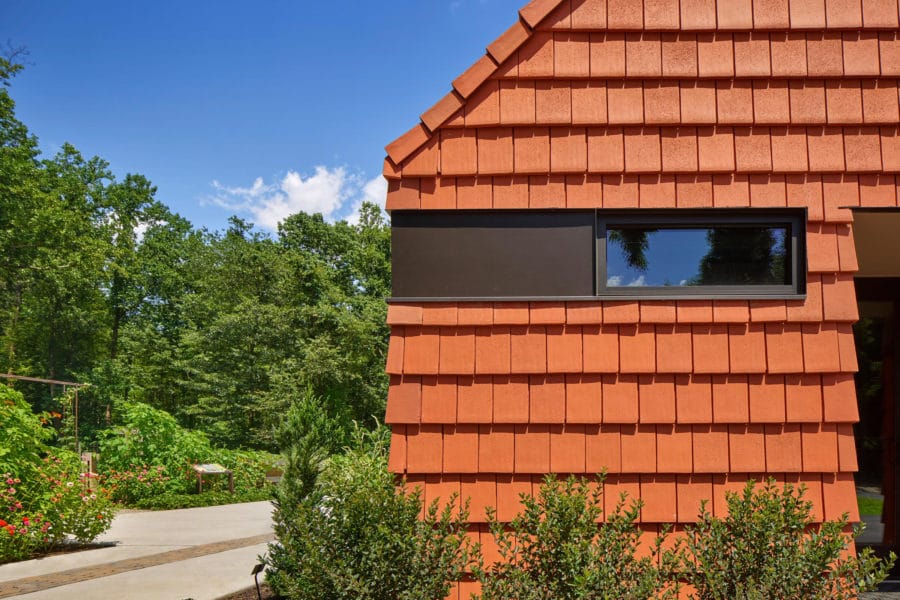
Tab Colbert, CEO of Ludowici, says terra-cotta is a “next level” sustainable material. Photo by Halkin Mason Photography
The EPA estimates the US produces 11 million tons of waste asphalt roofing shingles annually. This is approximately 8% of the nation’s total building-related waste. With two-thirds of roof shingles in the US being made of asphalt, these shingles take up landfill space and release carcinogenic hydrocarbons into the ground.
Terra-cotta tile does not produce waste. While other roofing materials clog landfills, terra-cotta is natural, nontoxic, and can be recycled back into manufacturing immediately.
“When you’re looking for a product that’s reusable and recyclable, it completely fits that aim. We take a natural product, we dig up dirt, we put a lot of pressure on it, and then we bake it. That’s all we do. Our product is designed to last the life of the structure,” Tab Colbert, CEO of Ludowici, told gb&d.
3. It’s easy to install.
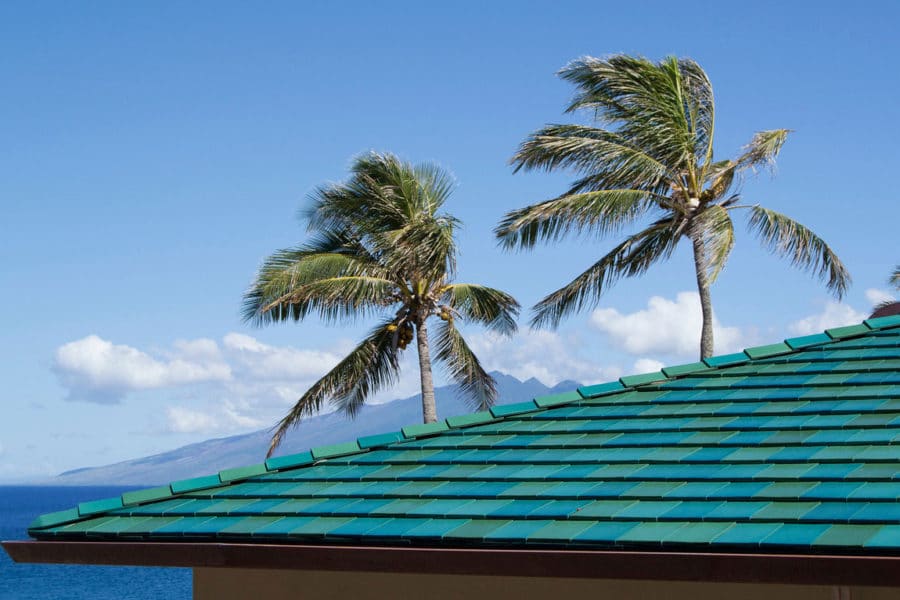
Ludowici’s Classic Interlocking tiles can be used in roofing or wall cladding applications and come with a 75-year warranty, including color. Photo courtesy of Ludowici
Although terra-cotta roofing tile can be heavier than other materials, many homes and buildings have been engineered to support it. If a home hasn’t previously had a tile or slate roof, an inspection will determine if more support is needed. Adding reinforcement is a straightforward process and usually represents a very small portion of the total project cost, according to the Tile Roofing Industry Alliance (TRI).
Terra-cotta roofing and cladding materials can have installed weights ranging from six pounds per square foot to eight pounds per square foot. For steep slope, hard roofing products, six pounds per square foot is considered lightweight, and many times will have little to no effect on the building’s structural framing design.
Ludowici’s interlocking tiles allow for larger-scale pieces and clean lines, too, making installation a breeze. “At Ludowici we lead the industry in offering several lightweight terra-cotta products to choose from. Our unique interlocking designs and profile engineering help provide less pieces per square to meet many weight requirements,” Wehr says.
4. It’s low maintenance.
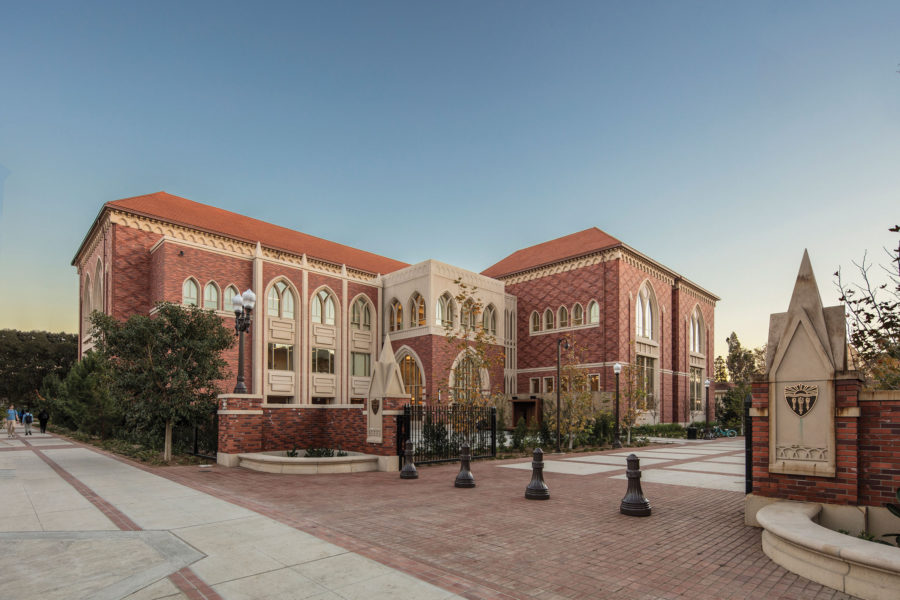
A Ludowici terra-cotta roof on Glorya Kaufman’s School of Dance at the University of Southern California. Photo courtesy of Ludowici
Terra-cotta also offers minimal maintenance throughout its lifetime. For example, Ludowici tiles never require regular re-coating, painting, or chemical cleaning to ensure the longevity of appearance and performance. Ludowici tiles are guaranteed to retain these properties for at least 75 years.
Terra-cotta’s longevity and low maintenance also mean there is a cost benefit. Depending on the size, weight, production method, and the colors and textures applied, many profiles begin at the affordable price of $3 per square foot for field tile materials.
5. It offers flexible design.
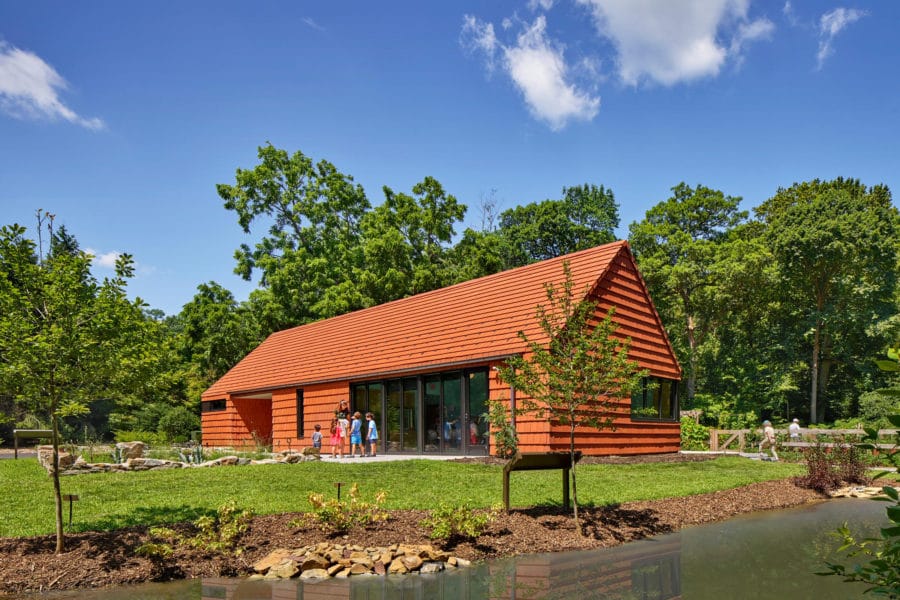
Tyler Arboretum’s living classroom building is entirely clad in terra-cotta tiles from Ludowici. Photo by Halkin Mason Photography
Terra-cotta can come in more than just one shape, size, and color. Terra-cotta has both a natural color and a glaze color that can be applied. Glazing is the color added onto the tile before going into the kiln.
There are many add-on techniques and textures to consider when developing beautiful tile coloring: spotting, misting, restricting range, gloss, weathering, and more. For example, Ludowici tiles are fired at 2,100°F for 24 hours to ensure the glaze has been properly fused onto the tile. This fusing process guarantees the color will not fade over time.
A tile’s natural color is the color range produced by the clay body that makes up the tile. These variations can create a depth and visual interest that other roofing materials don’t offer.
Since clay is an easily moldable material, there is also a range of shapes and styles that terra-cotta can come in. More than 40 standard roof tile profiles are offered at Ludowici—with plenty of options for customization. With hundreds of accessory pieces and custom trim, terra-cotta allows roofing to stand out.
One example of this can be seen at the Tyler Arboretum Edible Gardens in Pennsylvania. The project, designed by DIGSAU Architects, is clad entirely in terra-cotta tiles. Much of the project’s installation can be attributed to the NexClad product line by terra-cotta manufacturer Terreal North America, a subsidiary of Ludowici. This system provides an economical, aesthetically pleasing, and low-maintenance small module cladding facade in a number of textures, colors, and sizes.
“Ludowici has been customizing products for its customers since it was founded in 1888. As a result, we have shaped thousands of different tile profiles and are still able to reproduce any tile we have ever made. In addition to reproducing old and historic tile pieces, we regularly work with architects, designers, and building owners to develop custom tiles and install tile designs that set their projects apart,” Wehr says.
6. It’s fire-resistant.
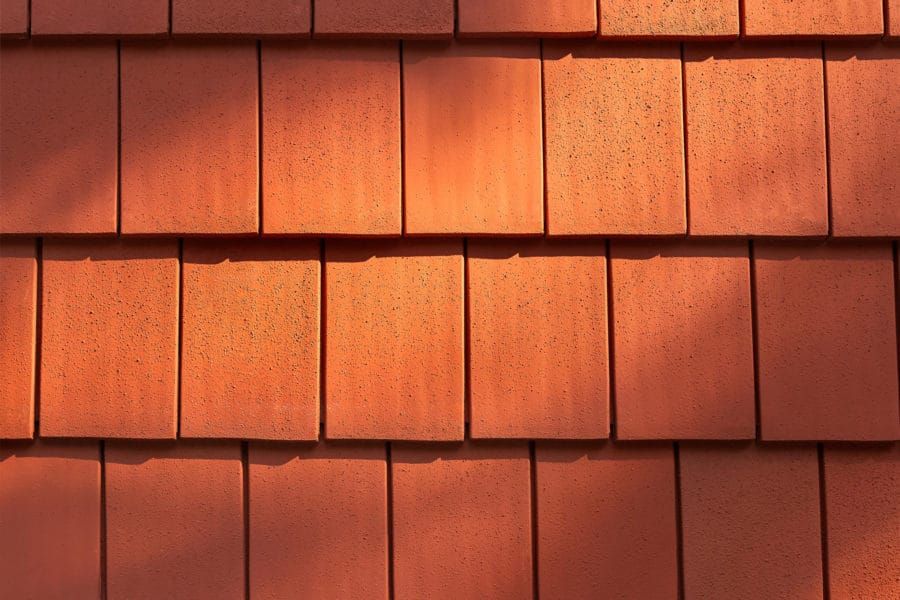
Terra-cotta is reminiscent of the clay pots that many home gardeners use—a nice tie in to the grassroots work being done at The Tyler Arboretum. Photo by Halkin Mason Photography
Multiple studies have found that climate change has led to an increase in wildfire frequency and season length. This is due, in part, to warmer springs, longer summer dry seasons, as well as drier soils and vegetation, according to the EPA. As our world is continuously affected by a changing climate, our building materials need to be more resistant. Luckily, terra-cotta is fire-resistant.
“One of the other great benefits of terra-cotta tile is its inability to burn. Many non-fire-resistant roofing products require expensive treatments to meet fire codes. With Ludowici tile, extra steps and added costs are eliminated and replaced with peace of mind,” says Wehr. Ludowici’s terra-cotta products are Class-A fire-rated without special treatment when used in the proper assembly.
7. It has strong thermal insulation.
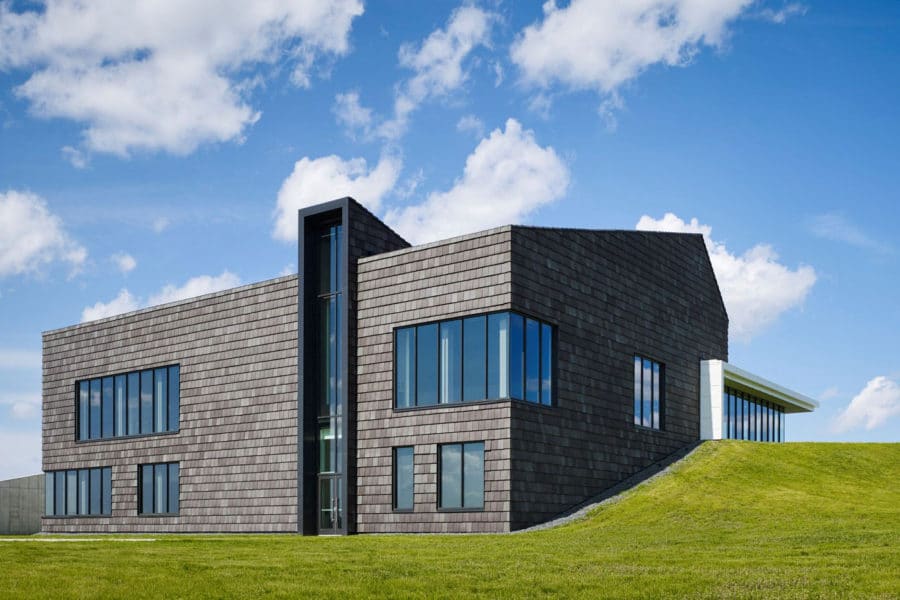
The Lutheran Church of Hope in Grimes, Iowa, has wall cladding made up of Ludowici and Terreal North America terra-cotta tile. Photo by Nick Merrick
Tile roofing like terra-cotta naturally reflects sunlight. This creates a cool roof effect that absorbs less heat than a standard roof. Terra-cotta roofing has a natural thermal resistance as a thermal barrier is created with airspace around individually installed tiles.
This natural air space can greatly reduce heat flux transfer compared to asphalt shingles. Ventilation under the tiles creates a heat transfer barrier that can help cool a house in summer and warm it in winter.
Exceptional thermal insulating performance can lower energy costs by as much as 20%, according to the TRI. Homeowners and building owners can also expect lower insurance premiums, thanks to the pest, wind, and fire resistance terra-cotta tiles provide.
8. It can help you earn LEED points.
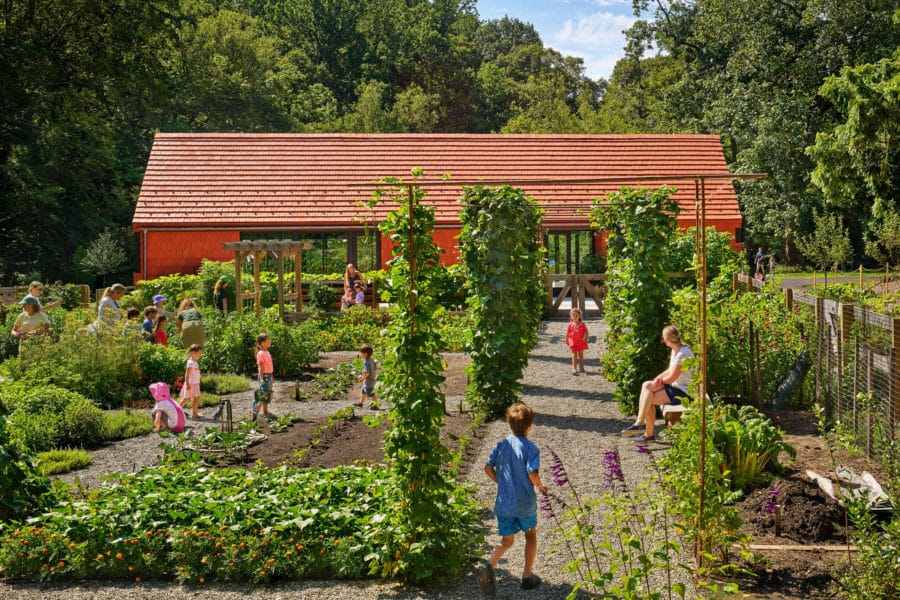
Over time, Ludowici’s terra-cotta tiles will host airborne microorganisms, pollens, and mosses—just like the natural materials that surround the arboretum. Photo by Halkin Mason Photography
Terra-cotta roofing is clearly a sustainable product, from its recyclability to how it reduces energy consumption. Its “green” benefits can help architects earn LEED points for their projects.
Ludowici contributes toward LEED certification by offering products that support MR: Building Product Disclosure and Optimization Material Ingredients and SS: Heat Island Reduction credits. Terra-cotta is also eligible to earn LEED and Energy-Star points in categories like heat island effect reduction, sourcing raw materials, and environmentally preferable products, according to the TRI.
Roofing hasn’t traditionally been awarded an abundance of LEED points because conventional shingles are an oil-based product, Colbert says. “They never really look at the life of the product,” he says. “We have applications that are 130 years old that are performing great.”

